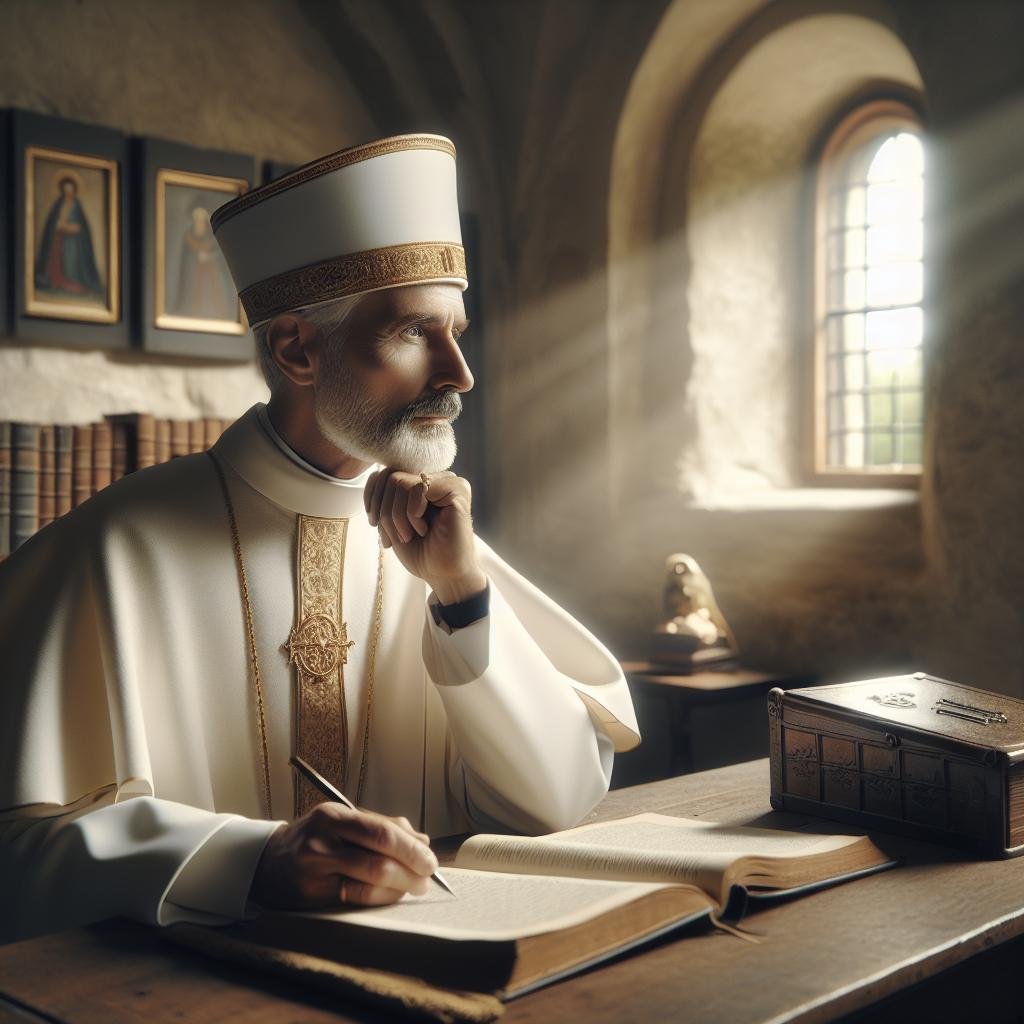
Pope Leo XIV’s Essential First Week Highlights
Pope Leo XIV began his first full week as the head of the Catholic Church on Monday, May 12, wasting no time in tackling key priorities following his historic election. The 77-year-old Argentinian, formerly Cardinal Victor Manuel Fernandez, embraced his new role with characteristic energy after being chosen as the 267th pope on Saturday. His selection marks a significant moment for the Church as he steps into the leadership position vacated by Pope Francis.
The Transition of Power
Leo XIV’s election came after a surprisingly swift conclave lasting just two days. The cardinals reached their decision faster than many Vatican observers had predicted, signaling strong consensus among the College of Cardinals. This quick decision reflects both the cardinal’s confidence in Fernandez and their desire for continuity in Church leadership.
Before his elevation to the papacy, Fernandez served as the prefect of the Dicastery for the Doctrine of the Faith, making him well-versed in Vatican operations. This experience has allowed him to hit the ground running during his first days as pope, with a schedule already filled with important meetings and decisions.
The new pontiff has chosen the name Leo, linking himself to a line of popes dating back to the 5th century. Pope Leo I, known as “the Great,” guided the Church through challenging political turmoil, while Leo XIII authored groundbreaking social encyclicals in the late 19th century. By selecting this name, Fernandez signals his intent to address both doctrinal matters and social issues facing today’s Church.
Key Appointments and First Decisions
One of Leo XIV’s first significant tasks involves staffing his papal administration. Vatican sources indicate he met with several key officials on Monday to discuss roles in his pontificate. These early appointments will offer insights into the direction and priorities of his leadership.
The pope has already confirmed that Cardinal Pietro Parolin will remain as Secretary of State, maintaining continuity in Vatican diplomacy. This decision suggests Leo XIV values experienced leadership in managing the Holy See’s international relations during a time of global conflicts.
Additionally, the new pontiff has scheduled a series of audiences with heads of Vatican departments to review ongoing projects and initiatives. These meetings allow him to understand the current state of Church administration while beginning to shape his own agenda.
Upcoming Public Appearances
The Vatican has announced that Leo XIV will maintain the traditional Wednesday general audience this week, offering the faithful their first opportunity to see the new pope in this regular setting. The audience typically draws thousands of pilgrims to St. Peter’s Square and serves as a platform for the pope to deliver catechetical teachings.
Sunday will mark another milestone as Leo XIV celebrates his first Angelus prayer as pope from the window of the Apostolic Palace. This centuries-old tradition connects the pontiff directly with visitors gathered in St. Peter’s Square and with Catholics worldwide through broadcasts and streams.
These public appearances represent important moments for the new pope to establish his communication style and begin building a relationship with the faithful. Many Vatican watchers will analyze these early addresses for clues about his pastoral approach and priority issues.
The Papal Inauguration
Plans are underway for Leo XIV’s formal installation Mass, scheduled for Sunday, May 19. This ceremony, known as the “Inauguration of the Petrine Ministry,” will formalize his role as Bishop of Rome and leader of the worldwide Catholic Church.
The Vatican expects heads of state, religious leaders, and dignitaries from around the world to attend this historic event. Preparations include extensive security measures and logistics planning to accommodate the anticipated crowds.
Unlike past centuries when popes received an elaborate coronation with the papal tiara, modern installations follow a simpler liturgical formula introduced by Pope Paul VI. The centerpiece of the ceremony will be Leo XIV’s reception of the pallium (a wool stole symbolizing his role as shepherd) and the Fisherman’s Ring, which serves as his official papal seal.
Issues Awaiting the New Pope
Leo XIV inherits a Church facing numerous challenges both internally and in its engagement with the world. Several pressing matters likely top his agenda:
- Addressing clergy sexual abuse scandals and continuing reforms in accountability
- Navigating tensions between progressive and traditional factions within the Church
- Responding to declining religious practice in Western nations while supporting growth in Africa and Asia
- Advancing the Church’s voice on climate change, migration, and economic justice
- Managing Vatican finances and continuing administrative reforms
The new pope’s background as doctrinal prefect positions him uniquely to address theological questions facing the Church. Under Pope Francis, Fernandez gained a reputation as a thoughtful theologian who could articulate complex Church teachings in accessible ways.
According to Vatican News, Leo XIV has already expressed his commitment to continuing dialogue on synodality—the consultative process that involves broader participation in Church decision-making—while ensuring doctrinal clarity.
The Global Catholic Response
Catholics worldwide have responded to the election with interest and anticipation. Initial reactions suggest optimism about the new pontificate, though many faithful are still learning about their new spiritual leader.
In Argentina, Leo XIV’s homeland, celebrations marked the selection of another pope from the South American nation. President Javier Milei issued a statement congratulating the new pontiff and expressing hope for “continued constructive dialogue between Argentina and the Holy See.”
Meanwhile, Catholic communities across Europe, North America, Africa, and Asia have organized prayer services seeking divine guidance for Leo XIV as he begins his ministry. Church leaders have urged the faithful to support the new pope through prayer during this transition period.
Real-World Example
One telling moment during Leo XIV’s first days occurred when he visited the Vatican’s employee cafeteria unannounced for lunch on Sunday. Surprising kitchen staff and diners, the pope queued up for food alongside Vatican workers, selected the day’s pasta special, and sat at a table with groundskeepers and administrative staff. “I want to know what’s happening at ground level,” he reportedly told the startled diners, “and the cafeteria is where people speak freely.” This gesture echoes Pope Francis’s approachable style while establishing Leo XIV’s own distinctive presence and commitment to understanding daily Vatican operations firsthand.
Historical Context of the Transition
Leo XIV’s election follows a unique period in Church history. For the first time in nearly a millennium, a pope resigned when Benedict XVI stepped down in 2013. Then, for eleven years, the unusual situation existed where a reigning pope (Francis) and pope emeritus (Benedict) both lived within Vatican City until Benedict’s death in 2022.
Now, Leo XIV begins his pontificate with no living predecessor, returning to the historical norm for papal transitions. This clean slate offers him freedom to establish his own administrative priorities without the complexities that accompanied Francis’s early years.
Vatican historian Roberto Regoli of the Pontifical Gregorian University noted, “The early days of a pontificate often set patterns that endure throughout a pope’s reign. The appointments, decisions, and even symbolic gestures we see now may reveal much about the Church’s direction for years to come.”
Communication Style and Media Strategy
First impressions suggest Leo XIV may take a somewhat different approach to communication than his predecessor. While Pope Francis became known for his spontaneous remarks and phone calls to ordinary people, early indications show Leo XIV adopting a more structured communication style.
The Vatican press office has already announced plans for regular briefings on papal activities and statements, suggesting an organized media strategy. Additionally, the new pope has expressed interest in using digital platforms to reach younger Catholics while maintaining traditional communication channels.
Paolo Ruffini, prefect of the Dicastery for Communication, has stated that the Vatican’s communication team is “working closely with the Holy Father to ensure his message reaches Catholics of all generations using appropriate channels while preserving the dignity of the papal office.”
The Balance of Continuity and Change
As with any papal transition, observers watch carefully for signs of both continuity and change. Leo XIV faces the delicate task of honoring his predecessor’s legacy while establishing his own papal identity.
Early indicators suggest the new pope will maintain many of Francis’s priorities regarding social justice, ecological concerns, and outreach to marginalized communities. However, his background as doctrinal prefect may signal greater emphasis on theological clarity in Church teachings.
Cardinal Luis Antonio Tagle from the Philippines, who works closely with the pope in the Dicastery for Evangelization, observed, “Every pope brings his own charisms and priorities to the Petrine ministry while preserving the essential mission of the Church. We’re beginning to see how Pope Leo XIV will express this balance.”
Looking Ahead: The First 100 Days
Traditionally, a pope’s first hundred days serve as an important period for establishing priorities and setting the tone for their pontificate. For Leo XIV, this period will include several significant events:
- The formal inauguration ceremony on May 19
- Appointments to key Vatican positions
- Possible announcements regarding upcoming travel plans
- Potential encyclical letters or apostolic exhortations outlining his vision
- Decisions on ongoing Church processes, including the Synod on Synodality
Vatican analysts will watch these early actions closely for indications of Leo XIV’s governing style and theological emphases. The appointments he makes to key Vatican positions will be particularly telling, as these officials will shape the implementation of his vision for the Church.
According to Catholic News Agency, several important positions may see new appointments in coming weeks, including heads of major Vatican departments and the pope’s personal staff.
The Significance for Global Catholicism
Leo XIV assumes leadership at a time when the Catholic Church continues to experience significant geographic shifts. While Church attendance declines in much of Europe and North America, Catholic communities in Africa, Asia, and parts of Latin America show remarkable growth.
This demographic reality presents both challenges and opportunities for the new pope. He must address the concerns of Catholics in traditionally Catholic regions while supporting and guiding the Church in areas of expansion.
The appointment of cardinals from diverse regions during his predecessor’s papacy has already created a more globally representative College of Cardinals. Leo XIV’s own experience as a Latin American brings valuable perspective to understanding the Church outside its historical European center.
Prayer and Spiritual Leadership
Beyond administrative tasks and public appearances, the pope’s spiritual leadership remains central to his role. Vatican sources report that Leo XIV has emphasized prayer in his daily schedule, beginning each day with an hour of private prayer before celebrating Mass.
This spiritual foundation reflects the Catholic understanding that the pope’s primary responsibility is to serve as shepherd to the faithful, guiding them toward deeper relationship with Christ. Whatever administrative or diplomatic functions he performs flow from this essential pastoral mission.
In his brief remarks following his election, Leo XIV requested prayers from Catholics worldwide: “Before I bless you, I ask you to pray for me. The task is great, but God’s grace is greater.”
Conclusion
As Pope Leo XIV navigates his first full week as the leader of 1.3 billion Catholics worldwide, he faces both immense challenges and opportunities. The early days of his pontificate offer glimpses of how he may approach his role as the 267th successor to St. Peter.
With a background in theology and Church administration, Leo XIV brings valuable experience to the papacy. His choice of name connects him to a papal legacy of doctrinal clarity and social engagement, suggesting potential priorities for his leadership.
While much remains to be seen about how his pontificate will develop, these initial days provide important indicators of his pastoral approach and administrative style. Catholics worldwide now watch with interest as their new spiritual leader begins to chart the course for the Church in the coming years.
Have thoughts about Pope Leo XIV’s first week? Share your reflections in the comments section below or explore more articles about Vatican developments.


